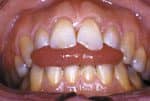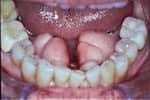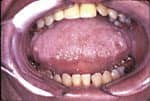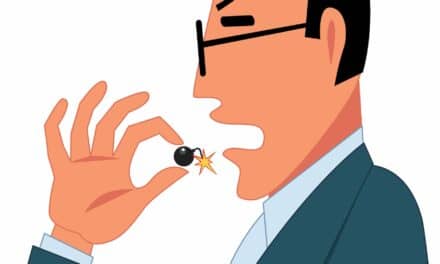A review with emphasis on restless legs syndrome and periodic limb movement disorder.
“Wherefore to some, when being a Bed they betake themselves to sleep, presently in the Arms and Leggs Leapings and Contractions to the Tendons, and so great a Restlessness and Tossing of their Members ensue, that the diseased are no more able to sleep, than if they were in a Place of the greatest Torture.”
—Sir Thomas Willis, English Physician, 1672

For sleep-related movements to be considered abnormal, either a nocturnal sleep disturbance or a complaint of excessive daytime sleepiness or fatigue has to be present. With the exception of movements due to restless legs syndrome (RLS), sleep-related movement disorders are relatively simple and usually stereotyped.1 Body movements that disrupt sleep are also seen in other sleep disorder categories (eg, some parasomnias, sleep-related epilepsy, etc). However, these movements are more complex in nature and they are classified separately.
Researchers have described an extensive group of movement disorders related to sleep. A recent attempt to group them in a systematic fashion was published in the International Classification of Sleep Disorders (ICSD-2) by the American Academy of Sleep Medicine (AASM)1; however, a more comprehensive classification can be found elsewhere.2 For the purposes of this review, the ICSD-2 will be used. (See Table 1.) The most recent ICD-9 coding numbers are included in order to assist with reimbursement issues.
|
Table 1: Classification and Codes for Sleep-related ICSD-2 Category VI ICSD-2 Category VII (Partial) |
Among the long list of sleep-related movement disorders, the most common ones are RLS and periodic limb movement disorder (PLMD). Accordingly, this article will concentrate on both disorders.
RESTLESS LEGS SYNDROME
RLS is an awake phenomenon. It is a neurological sensorimotor disorder characterized by unpleasant sensations in the legs that preclude a smooth transition from wakefulness to sleep. These symptoms can also significantly interfere with personal or social evening activities. By disrupting the patient’s ability to fall asleep or return to sleep after an awakening, RLS will cause excessive daytime sleepiness. Up to 80% to 90% of RLS patients can present periodic limb movements during sleep (PLMS).
RLS presents the following four diagnostic criteria in patients 12 or older1,3,4:
- Akathisia (distressing, irresistible need to move legs), usually accompanied by paresthesias. (This is a core feature.)
- Motor restlessness.
- Symptoms worsen at rest.
- Symptoms worsen at night.
For pediatric patients age 2 to 12, one should use the following criteria for the definite* diagnosis of RLS1:
1. The child meets all four essential adult criteria for RLS mentioned above, and
a. The child relates a description in his/her own words
that is consistent with leg discomfort, or
b. The child meets all four essential adult criteria for RLS, and
2. Two of three following supportive criteria are present:
a. Sleep disturbance for age.
b. A biological parent or sibling has definite RLS.
c. The child has a polysomnographically documented
PLMS index of 5 or more per hour of sleep.
Once diagnosed, the severity of the condition can be assessed by the International Restless Legs Syndrome Rating Scale. Patients are asked to answer all but one of 10 questions with either 0=none, 1=mild, 2=moderate, 3=severe, or 4=very severe. For question 3 (*), the one exception, patients are asked to answer with either 0=no RLS symptoms and therefore question does not apply, 1=either complete or almost complete relief, 2=moderate relief, 3=slight relief, or 4=no relief. The questions are:
- Overall, how would you rate the RLS discomfort in your legs or arms?
- Overall, how would you rate the need to move around because of your RLS symptoms?
- (*)Overall, how much relief of your RLS arm or leg discomfort do you get from moving around?
- Overall, how severe is your sleep disturbance from your RLS symptoms?
- How severe is your tiredness or sleepiness during the day from your RLS symptoms?
- Overall, how severe is your RLS as a whole?
- How often do you get RLS symptoms?
- When you have RLS symptoms, how severe are they on an average day?
- Overall, how severe is the impact of your RLS symptoms on your ability to carry out your daily affairs, for example, carrying out a satisfactory family, home, social, school, or work life?
- How severe is your mood disturbance from your RLS symptoms, for example, angry, depressed, sad, anxious, or irritable?
Once the questionnaire is completed, the numbers are tallied to assess the severity of the RLS. Those who score between 1 and 10 have mild RLS. Those who score between 11 and 20 have a moderate case, those who score 21-30 have a severe case, and, finally, those who score 31-40 have very severe RLS.
RLS Epidemiology, Predisposing factors, and Pathophysiology
Studies have reported the prevalence of RLS to be from 3% to 15% of the general population; however, a series from primary care patients have reported a prevalence as high as 24%.6 The largest, multinational, adult population-based study (the REST General Population Study) recently reported a prevalence of 7.2%.7
RLS can be seen in all age groups, and is twice as prevalent in women as in men. Its symptoms can present or exacerbate due to a variety of factors. Addressing predisposing factors will enable the physician to better control RLS symptoms:
- Iron deficiency conditions (iron deficiency anemia, chronic advanced renal insufficiency, pregnancy, frequent blood donation, gastrointestinal blood loss). This is best evaluated by ferritin or iron saturation testing.
- Peripheral neuropathy.
- Sedating antihistamines, centrally active dopamine-receptor antagonists (metoclopramide, prochlorperazine), antipsychotics, and most antidepressants (except bupropion).
- Caffeine.
- Familial pattern in more than 50% of patients with primary RLS.
The main pathophysiologic factors are iron deficiency and reduction of dopamine function in the striatum. Genetic factors are also involved and have been described in relation with chromosome 12q, 14q, and 9p in a limited number of familial cases.
Diagnosis
For the majority of RLS cases, the diagnosis can be reached with clinical information only. Further investigation may be needed in some cases by using the Suggested Immobilization Test (SIT). SIT evaluates for periodic limb movement of wakefulness (PLMW), resulting in a positive diagnosis of RLS if more than 40 PLMWs per hour are recorded. SIT provides high diagnostic accuracy (sensitivity 82%, specificity 100%).8
RLS differential diagnosis includes:
- Positional discomfort
- Sleep starts (hypnic jerks)
- Neuroleptic-induced akathisia
- PLMD
- Sleep-related leg cramps
- Pain (arthritis, peripheral neuropathy, spinal cord lesions)
- Hypotensive akathisia
Treatment
As with other sleep/wake disorders, improvement of sleep hygiene should be emphasized, especially in regard to avoiding caffeine and excessive physical activity prior to sleep, and avoiding staying in bed for reasons other than sleep or intimacy. Avoidance of the above-mentioned predisposing factors is also imperative. Regarding nonpharmacologic treatments, relaxation techniques, hot or thermal baths, leg vibration, massage, biofeedback, and acupuncture may be helpful, though these interventions have not been well studied yet.
Pharmacologic therapy should be individualized, and the patient and physician should work together over time to find the medication or combination and dosages that will work best. Very importantly, therapy should be geared toward control of symptoms of restlessness rather than symptoms of insomnia or excessive daytime sleepiness (the latter two symptoms should improve with specific RLS treatment). Pharmacologic treatment should be upgraded over time in dose and/or combination of medications for those patients with worse symptoms. In choosing medications to treat RLS in children, no national or international guidelines exist yet, therefore, it is strongly recommended to consult with a somnologist with experience in pediatric RLS patients.
Pharmacologic treatment options for RLS include dopaminergic agents, anticonvulsants, opioids, and benzodiazepines. Of note, as of May 2005, the only US Food and Drug Administration (FDA) approved medication for RLS was ropinirole; however, several other medications have been used “off-label” for years.
Oral iron supplementation should be prescribed if ferritin serum level is less than 50 mg/L or iron saturation is less than 16%.9 There is some experience with successful use of parenteral iron supplementation10; however, this should be reserved for carefully selected cases. (For a list of drugs used for RLS, see Table 2.)
Table 2. Some drugs used for RLS.
Dopaminergic agents are considered the first-line treatment for RLS. Among them, the nonergot D2 agonists (eg, ropinirole,11 pramipexole12) are more effective and better tolerated than the ergot derivatives (pergolide, bromocriptine) and the dopaminergic precursors (levodopa/carbidopa). The nonergot D2 agonists show much less frequency of augmentation as a side effect (20-30% as opposed to 80% seen with levodopa/carbidopa). Augmentation is the development of an increase in severity and duration as well as earlier presentation of symptoms.
Among the anticonvulsants, gabapentin13 and carbamazepine have demonstrated some efficacy in moderate RLS. Limited experience has been reported with lamotrigine, gabitril, and topiramate.
Opiods (propoxyphene, codeine, oxycodone, methadone) are generally reserved for patients with pain and severe symptoms. There is no evidence of tolerance to opioids even with therapy for many years.14
Benzodiazepines (diazepam, clonazepam) have been used with moderate success, but there is concern regarding potential for dependency to these drugs.
Several novel pharmacologic agents are currently being studied in RLS.15 They are in different phases of clinical trials and include rotigotine (a transdermal selective dopaminergic agonist); entacapone (a COMT inhibitor that prolongs serum levodopa levels) plus levodopa/carbidopa; dopamine and noradrenaline uptake inhibitors (SEP-226330, radafaxine [GW-353162]); XP-13512 (a prodrug of gabapentin); and safinamide (MAO-B and dopamine uptake inhibitor).
PERIODIC LIMB MOVEMENT DISORDER
PLMD is characterized by periodic episodes of repetitive and stereotyped limb movements that occur during sleep. These movements can cause clinical sleep disturbance expressed by insomnia or excessive daytime sleepiness. In contrast to RLS, PLMD is not an awake phenomenon but an asleep phenomenon, and its diagnosis requires polysomnographic documentation of an increased number of PLMS in association with significant disruption of sleep architecture and symptomatology.
Polysomnographic diagnostic criteria for PLMS1 are based on electromyography (EMG) of the right and left anterior tibialis muscles. The movements may or may not be followed by arousal or awakening as determined by the polysomnogram. Movements preceded by a spontaneous arousal or associated with the termination of a respiratory event are not scored. To be scored, PLMS should meet these four criteria:
- EMG bursts of 0.5-5 seconds in duration recorded during sleep.
- Amplitude of EMG bursts greater than or equal to 25% of deflection seen with toe dorsiflexion during biocalibration.
- EMG bursts occur in a sequence of four or more movements.
- EMG bursts are separated by an interval of more than 5 seconds and less than 90 seconds.
(For an example, see Figure 1.)

Once diagnosed, the severity of the PLMD can be determined using the Periodic Limb Movement Index (PLMI). A PLMI must be interpreted in the context of the patient’s sleep-related complaint:
- Mild: greater than 5 but less than 25 events per hour.
- Moderate: greater than or equal to 25 but less than 50 events per hour.
- Severe: greater than 50 events per hour.
A PLMI greater than 5 per hour in children and 15 per hour in adults is considered significant, but, once again, this index should be interpreted in the context of the patient’s complaints.1
(For examples of patients with frequent PLMS/PLMD, see Figures 2 and 3, below.)
Figure 2: A 120-second epoch showing very frequent periodic limb movements during sleep (PLMS), as marked in the red circles. In this patient, PLMS are causing significant sleep disturbance as expressed by very frequent arousals (about 4 arousals per minute). The patient complained of severe daytime sleepiness.

PLMD Epidemiology, Predisposing factors, and Pathophysiology
PLMS are a common phenomenon in otherwise healthy individuals. They also become more prevalent with increasing age (occurring in up to 34% of people over 60 years of age). However, a significant number of PLMS causing PLMD can be observed in children and adolescents.16,17 PLMS are very common in other sleep disorders, including RLS (80-90%), narcolepsy (45-65%), and REM sleep behavior disorder (70%).1 The exact prevalence of PLMD is unknown.
PLMS can present or exacerbate due to a variety of factors, including:
- Other sleep disorders: RLS, narcolepsy, REM behavior disorder (RBD).
- Multiple system atrophy.
- Spinal cord injury.
- Sleep-related eating disorder.
- End-stage renal disease, Parkinson’s disease, attention-deficit hyperactivity disorder, pregnancy, posttraumatic stress disorder, Asperger’s syndrome, Williams syndrome, multiple sclerosis, hypertension.
- Iron deficiency.
- Dopamine-receptor antagonists (metoclopramide, prochlorperazine), antipsychotics, most antidepressants (except bupropion).
Dopaminergic impairment and iron deficiency have been implicated in the generation of PLMS, similar to RLS.
Diagnosis
Polysomnography with monitoring of EMG activity will document the presence of PLMS and their impact on sleep. As already mentioned, PLMS should correlate with a clinically significant sleep disturbance to meet criteria for PLMD.
More recently, activity monitors designed to avoid technical problems of EMG recordings have been studied. These new devices may offer the advantage of multiple night recording in a home environment. Additionally, activity monitors can also be used in the diagnosis and treatment evaluation of RLS.18
PLMD differential diagnosis includes:
- Sleep starts (hypnic jerks)
- Normal phasic REM activity
- Fragmentary myoclonus
- Nocturnal epileptic seizures
- Myoclonic epilepsy
- Other myoclonic conditions
Treatment
As in the treatment for RLS, PLMD patients should be given general recommendations for improvement of sleep hygiene and control of precipitating factors. Pharmacologic treatment for PLMS is not warranted unless there is obvious sleep disruption. Once the patient meets criteria for significant PLMD, treatment recommendations are similar to RLS regimens. In summary, the worse the sleep architecture disruption, insomnia, and/or daytime sleepiness, the more aggressive the treatment should be. Treatment should be geared toward control of the disease rather than accessory symptoms. Regarding medications to treat PLMD in children, no national or international guidelines exist yet, therefore, it is strongly recommended to consult with a somnologist with experience in pediatric PLMD patients.
CONCLUSIONS
Sleep-related movement disorders are a vast group of conditions that merit awareness from the medical community in general. RLS and PLMD are the most common of these disorders. General practitioners and other health professionals should be able to recognize these conditions19 and, if appropriate, initiate treatment or facilitate referral to a somnologist for further workup and optimization of outcomes.20-22 Health providers should educate their patients and their relatives about these conditions and encourage them to enroll in support groups and search for adequate sources of information, like the National Sleep Foundation (www.sleepfoundation.org), the Restless Legs Syndrome Foundation (www.rls.org), and the Worldwide Education and Awareness for Movement Disorders (www.wemove.org).
* Criteria for probable and possible RLS have been developed for research purposes by the National Institutes of Health RLS Foundation Workshop (RLS: Diagnosis and Diagnostic and Epidemiological Tools. May 2002).
Carlos E. Sotelo, MD, DABSM, is a somnologist, pulmonologist, and intensivist working at Physicians Medical Group, PC, in Grants Pass, Ore. He is affiliated to the Sleep Laboratory at Grants Pass Imaging & Diagnostic Center and Rogue Valley Sleep Center in Medford, Ore.
Dr. Sotelo graduated from Tulane University Health Sciences Center in New Orleans, and has been working in southern Oregon since December 2004.
ACKNOWLEDGMENT
The author is indebted to Nic Butkov, RPSGT, for his contribution in the preparation of this article.
REFERENCES
1. The International Classification of Sleep Disorders, Revised: Diagnostic and Coding Manual. 2nd ed. Westchester, Ill: American Academy of Sleep Medicine; 2005:177-220.
2. Chokroverty S, Hening W, Walters A. Sleep and Movement Disorders. Burlington, Mass: Butterworth Heinemann; 2003:201-218.
3. Walters AS. The International Restless Legs Syndrome Study Group. Toward a better definition of the restless legs syndrome. Mov Disord. 1995; 10:634-642.
4. Allen RP, Picchietti D, Hening WA, et al. Restless legs syndrome: diagnostic criteria, special considerations, and epidemiology: a report from the restless legs syndrome diagnosis and epidemiology workshop at the National Institutes of Health. Sleep Med. 2003;4:101-119.
5. Walters AS, LeBrocq C, Dhar A, et al. International Restless Legs Syndrome Study Group. Validation of the International Restless Legs Syndrome Study Group rating scale for restless legs syndrome. Sleep Med. 2003;4:121-132.
6. Nichols DA, Allen RP, Grauke JH, et al. Restless legs syndrome symptoms in primary care: a prevalence study. Arch Intern Med. 2003;163:2323-2329.
7. Allen RP, Walters AS, Montplaisir J, et al. Restless legs syndrome prevalence and impact: REST general population study. Arch Intern Med. 2005;165:1286-1292.
8. Michaud M, Paquet J, Lavigne G, et al. Sleep laboratory diagnosis of restless legs syndrome. Eur Neurol. 2002;48: 108-113.
9. O’Keeffe ST, Gavin K, Lavan JN. Iron status and restless legs syndrome in the elderly. Age Ageing. 1994;23:200-203.
10. Earley CJ, Heckler D, Allen RP. Repeated IV doses of iron provides effective supplemental treatment of restless legs syndrome. Sleep Med. 2005; 6:301-305.
11. Bogan RK, Fry JM, Schmidt MH, et al. Ropinirole in the treatment of patients with restless legs syndrome: a US-based randomized, double-blind, placebo-controlled clinical trial. Mayo Clin Proc. 2006;81:17-27.
12. Montplaisir J, Nicolas A, Denesle R, Gomez-Mancilla B. Restless legs syndrome improved by pramipexole: a double-blind randomized trial. Neurology. 1999;52:938-943.
13. Garcia-Borreguero D, Larrosa O, de la Llave Y, et al. Treatment of restless legs syndrome with gabapentin: a double-blind, cross-over study. Neurology. 2002;59:1573-1579.
14. Walters AS, Winkelmann J, Trenkwalder C, et al. Long-term follow-up on restless legs syndrome patients treated with opioids. Mov Disord. 2001;16:1105-1109.
15. Fulda S, Wetter TC. Emerging drugs for restless legs syndrome. Expert Opin Emerg Drugs. 2005;10:537-552.
16. Picchietti DL, Walters AS. Moderate to severe periodic limb movement disorder in childhood and adolescence. Sleep. 1999;22:297-300.
17. Simakajornboon N, Gozal D, Vlasic V, et al. Periodic limb movements in sleep and iron status in children. Sleep. 2003;26:735-738.
18. Sforza E, Johannes M, Claudio B. The PAM-RL ambulatory device for detection of periodic leg movements: a validation study. Sleep Med. 2005; 6:407-413.
19. Silber MH, Ehrenberg BL, Allen RP, et al. An algorithm for the management of restless legs syndrome. Mayo Clin Proc. 2004;79:916-922.
20. Hening W, Allen R, Earley C, et al. The treatment of restless legs syndrome and periodic limb movement disorder. Sleep. 1999;22:970-999.
21. Littner MR, Kushida C, Anderson WM, et al. Practice parameters for the dopaminergic treatment of restless legs syndrome and periodic limb movement disorder. Sleep. 2004;27:557-559.
22. Hening WA, Allen RP, Early CJ, et al. An update on the dopaminergic treatment of restless legs syndrome and periodic limb movement disorder. Sleep. 2004;27:560-583.






